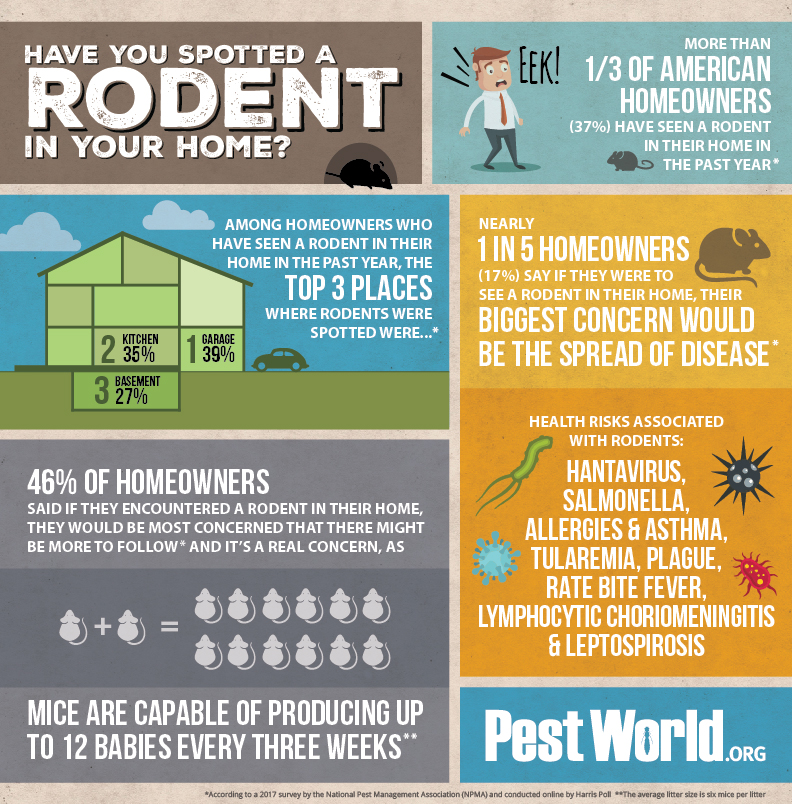Gaining Expertise On Exactly How Rats Act Is Crucial For Effectively Managing Pest Infestations. Professionals Offer Valuable Understandings On This Issue
Gaining Expertise On Exactly How Rats Act Is Crucial For Effectively Managing Pest Infestations. Professionals Offer Valuable Understandings On This Issue
Blog Article
Personnel Author-Medina Levin
Think of having the ability to prepare for the actions of your opponents in a video game of chess, constantly staying one step in advance.
Worldwide of parasite control, understanding rodent behavior is like having that tactical benefit. By gaining expert insights into the nesting behaviors, feeding patterns, and communication and social habits of rats, you can successfully fight these pesky animals.
But how exactly do rats act, and why is it crucial to recognize? In this conversation, we will untangle the mysteries of rodent actions, supplying you with useful knowledge that will assist you stay ahead in the battle against parasites.
Are you ready to uncover the secrets of these shrewd creatures?
Nesting Behaviors
To understand rodent actions and effectively control bugs, it is very important to gain understanding into their nesting routines.
Rats, such as computer mice and rats, have a natural instinct to discover sanctuary and create nests where they really feel secure and protected. click here as their homes, reproducing premises, and storage areas for food. Comprehending their nesting behaviors can help you determine potential areas of invasion and carry out targeted control procedures.
Rodents normally favor nesting in dark, remote spaces, such as attics, cellars, crawl spaces, and wall voids. They use products like shredded paper, textile, insulation, and also chewed-up electric wires to develop their nests.
Feeding Patterns
Rats display unique feeding patterns that play an essential duty in their behavior and can inform efficient bug control strategies. Comprehending https://rat-removal-from-garden73840.blogs100.com/26241346/the-unseen-risks-of-overlooking-the-requirement-for-insect-control-provider is crucial for implementing successful insect control procedures.
Rats are opportunistic feeders, implying they'll consume whatever food is conveniently available. They prefer high-calorie foods such as grains, nuts, and seeds. This is why appropriate storage of food and waste management are important in avoiding rodent invasions.
Furthermore, rats are nighttime, which suggests they're most active during the evening when they search for food. By knowing their feeding patterns, you can strategically position traps and lures to optimize their performance.
Keeping food resources inaccessible and keeping a tidy setting can help discourage rats and decrease the threat of infestation.
Interaction and Social Behavior
Recognizing just how rats communicate and communicate socially is vital for reliable bug control techniques. Rats, like computer mice and rats, have complex interaction systems that they make use of to share details to each other and coordinate their tasks. Below are three vital facets of rodent interaction and social actions:
1. https://how-to-remove-rat-urine-o95172.kylieblog.com/26241912/the-importance-of-regular-insect-control-solutions-for-a-health-household : Rats produce a variety of vocal noises, consisting of squeaks, chirps, and chattering, to interact with each other. These articulations can convey various messages, such as risk cautions or mating telephone calls.
2. Scent marking: Rodents utilize scent glands to leave chemical signals on things and in their setting. These scent marks serve as territorial borders and interact info about reproductive status, dominance, and social association.
3. Social hierarchy: Rats have a hierarchical social structure, with leading people having accessibility to resources and preferred nesting websites. Recognizing this pecking order is necessary for targeting bug control initiatives and identifying key individuals for removal.
Final thought
So, there you have it - a quick glimpse right into the remarkable world of rodent actions. By recognizing their nesting habits, feeding patterns, and communication, we can much better take on the issue of pest control.
Did you know that a women computer mouse can produce up to 10 litters annually, with each trash containing around 5-6 pups? This amazing fact highlights the significance of prompt and efficient parasite administration to avoid rodent populaces from spiraling out of hand.
